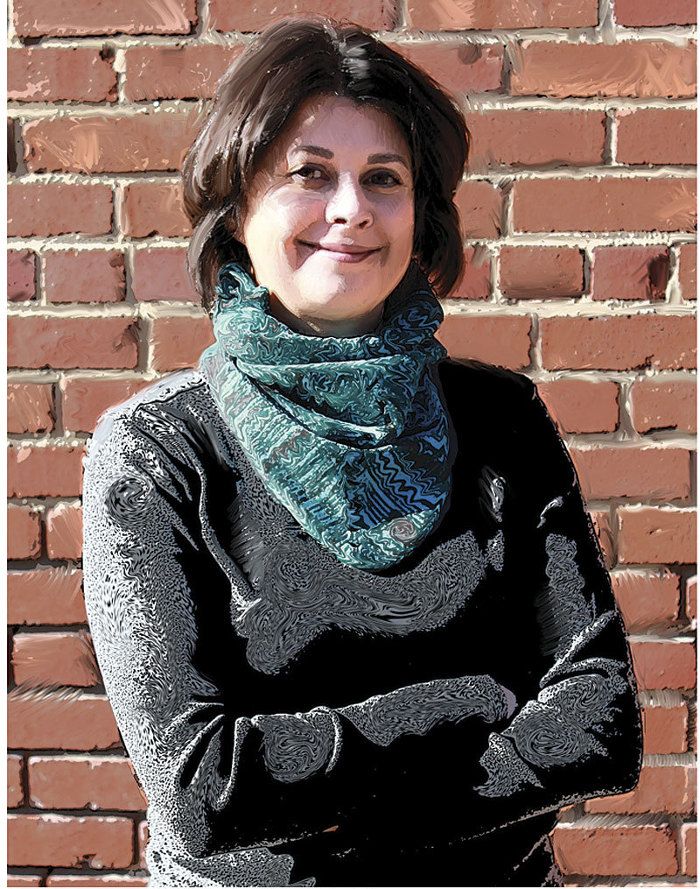Molly Jones McCabe: Tribal-Housing Advocate
Red Feather Development is in its 20th year of working with tribal communities to build safe and adequate housing.

Describe where your mission has taken you and where it’s going.
When Red Feather Development was formed back in 1995, it was a grassroots organization building one house at a time, and for many years that model worked. In recent years, though, we’ve heard from our funders and the tribal communities we serve that they would like to see a broader impact. We still honor our original mission, which is addressing the great housing needs in tribal lands, but rather than just building one house at a time, we’ve expanded our programs to include DIY workshops that give tribal homeowners the knowledge, tools, and materials they need to improve their housing situation. For example, we do a workshop on weatherization, and we also have heard great feedback on a home-repair and maintenance workshop for women.
We’ve always done health and safety renovations, but now they are a more formal part of our program offerings, because a new home remains out of reach for a large segment of homeowners.
What does the lack of adequate housing mean in tribal communities?
That depends on how you look at it. Every tribal community is different. The two tribal communities we are focusing on right now are the Northern Cheyenne in eastern Montana and the Hopi in northern Arizona. What we see is that a lot of people have homes, but these homes are not necessarily healthy or safe. We are trying to address issues of incomplete plumbing systems, incomplete kitchens, and lack of adequate heat. Most homes have wood or coal stoves, which usually are not very efficient or healthy heat sources. This year we are going to launch a DIY maintenance workshop for wood and coal stoves.
Overcrowding also is a huge issue. Some of our new construction accommodates multifamily or multigenerational scenarios. We try to approach these challenges and inadequacies from a number of different angles so that we address the unique demands of each situation.
How have your initiatives evolved?
When we delivered a workshop in the past, we were going to communities where specific needs were discussed and then developed into a workshop Red Feather staff would deliver. Now we focus on training tribal partners to deliver the workshops. That is the new model we are using to create self-sustaining programs.
How much of building is about building successful relationships?
There is a long history of strained relations between native communities and outsiders. Even though we have worked with the Hopi and Northern Cheyenne for quite a while, we’re still outsiders. Because we know our place, they have come to trust our motives. We don’t just swoop in, build a house, and then leave.
One thing I have learned is that you have to let go of your ego, let go of anything you think you know, and just listen. We may think we know the answers and solutions to the challenges we see, but if it’s a solution that I bring to, let’s say, the Hopi, it’s not going to be nearly as successful as a solution the Hopi community brings to us. I may be Native American, but I’m not Hopi. And a solution that might work for the Hopi might not be a solution that would work for the Northern Cheyenne. The right home for a Hopi might not meet the needs of a Northern Cheyenne tribal member. In fact, it won’t.
If you think about it, Native Americans are among the first green builders. We have found that we have a lot to learn from our tribal partners if we listen and incorporate their ideas, building traditions, and local materials. Transparency, collaboration, and a multifaceted approach that includes not just direct services but also economic development has been critical to Red Feather’s credibility and success.
What about your work doesn’t get talked about enough?
A 2003 report by the U.S. Commission on Civil Rights estimated that about 90,000 tribal families were homeless or underhoused and that tribal communities nationwide faced an immediate housing shortfall of 200,000 homes. The reasons for substandard housing are as complex as the solutions. With the help of our sponsors—Gulf & Basco, Heritage Natural Finishes, Home Depot, In Good Company, Kodiak Building Partners, Metal Sales Manufacturing, and Therma-Tru Doors—we were able to bring the price of our latest project, an 1100-sq.-ft. home, down to $65 per sq. ft. We are always looking for skilled volunteers to come build or for people who have materials to donate.
Web extra: For more on this interview, read the Extended Tailgate.
Illustration: Jacqueline Rogers

























